Assessing environmental impact to meet the Corporate Sustainability Reporting Directive (CSRD)
- We have developed a carbon calculator toolkit to help our customers better understand their upstream Scope 3 emissions.
- Enterprises can use this data to establish a baseline carbon footprint, especially for Scope 3 emissions, where direct data collection can be highly challenging.
- Orange Business is committed to helping its customers on their sustainability journeys by offering technology and solutions that promote energy efficiency, reduce waste and decarbonize business operations.
From January 1, 2025, all large companies in the European Union (EU) will need to disclose detailed and auditable data on their greenhouse gas emissions (GHG) as part of the Corporate Sustainability Reporting Directive (CRSD).
CRSD is designed to end greenwashing, strengthen the EU’s social market economy and lay the groundwork for sustainability reporting standards at the global level.
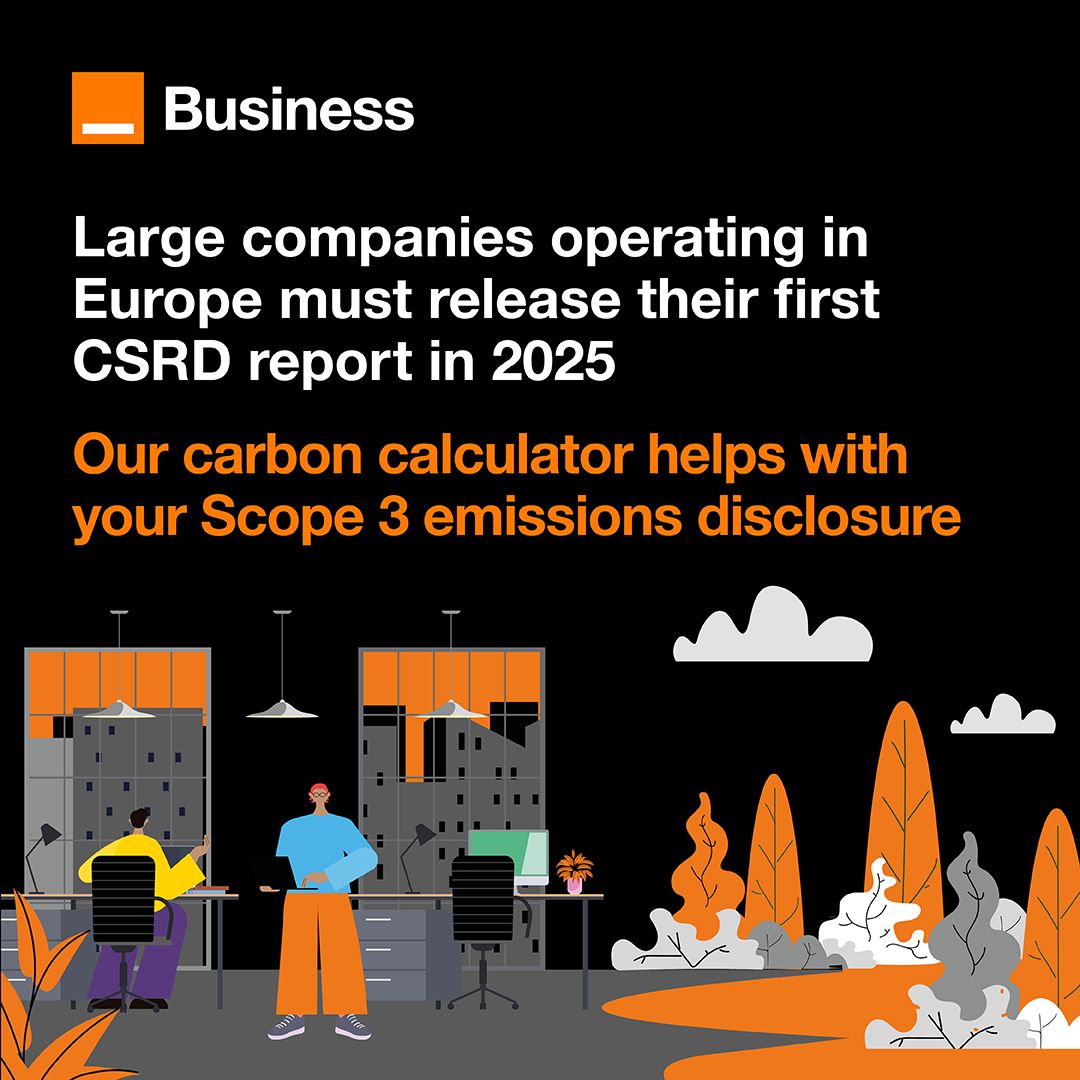
The reporting requirements cover Scope 1, 2 and 3 emissions. Compiling Scope 3 emissions will be the most problematic, as these indirect emissions result from a company’s activities outside its direct control. It isn’t easy to get an accurate and consistent picture of GHG emissions in the technology sector, as it covers a global, multi-tiered supply chain. Many suppliers are involved in manufacturing, assembly, distribution and raw material extraction, and there is no universal standard for measuring Scope 3 emissions.
The road to sustainable computing
The road to more sustainable computing is challenging. Technologies and requirements are evolving rapidly. Organizations need to be able to measure and track the various components of their IT estate to understand which applications, systems and services can be made greener, where initial efforts can be made, and improve reporting.
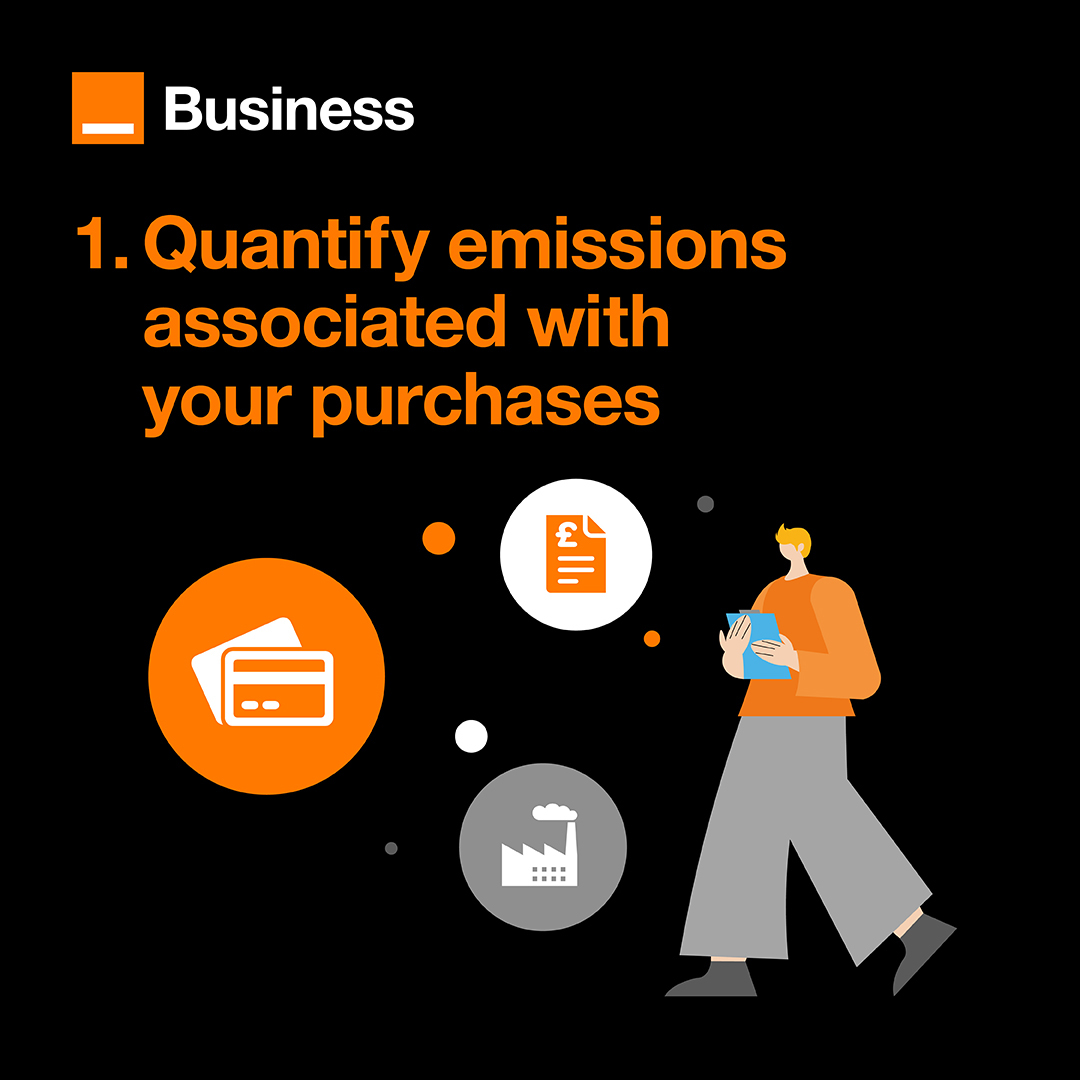
We have developed a toolkit to help customers better understand their upstream Scope 3 emissions. It enables customers to quantify the carbon emissions associated with the products and services they procure from the entire Orange Business product and service portfolio.
Our pragmatic approach allows customers to assess whether their purchases appear significant in terms of carbon weight and to see how they are decarbonizing year on year.
The tools use a proven monetary methodology that is auditable and traceable based on an analytical cost-accounting system to address carbon disclosure. This approach uses financial data to estimate associated carbon emissions, such as the monetary value of goods and services purchases. This method is particularly valuable when detailed activity or emissions data is not readily available, particularly for Scope 3 emissions.
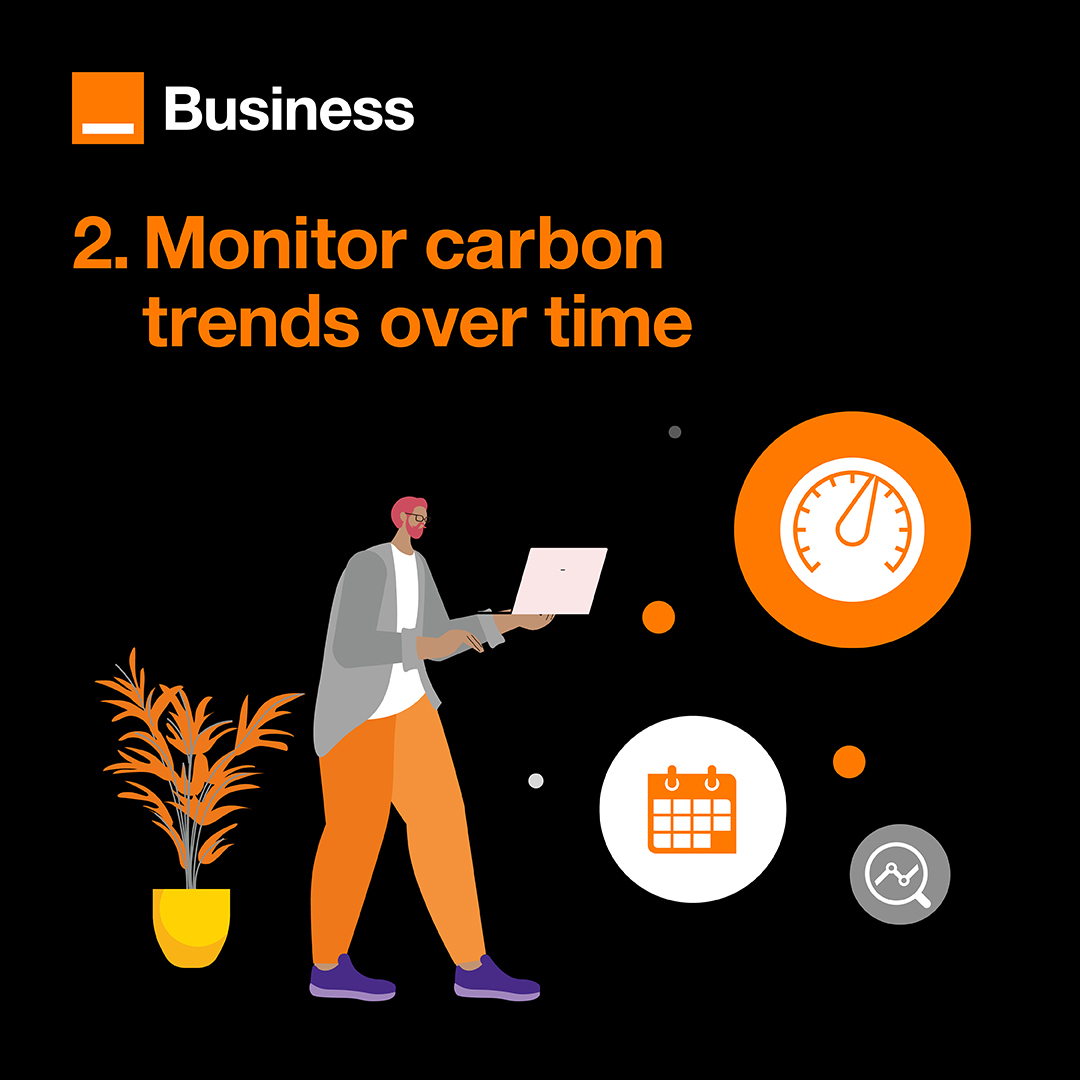
Emissions factors are displayed in the weight of CO2 emissions per euro of spend (tCO2e/€), from the most carbon-intensive category to the least. Categories include cloud, digital services, IoT services, contact center and collaboration, and telephony. We measure emissions from cradle-to-gate, consisting of the production phase, and not cradle-to-grave, which includes the entire product cycle. This addresses our customers’ need to better grasp the carbon emissions embedded in their purchases, corresponding to their upstream Scope 3.
Setting a baseline for carbon footprint
The tools provide approximations so customers can determine the magnitude of emissions associated with each of our offers. For example, customers can use our calculations for Requests for Proposals (RFPs) and contract renewals.
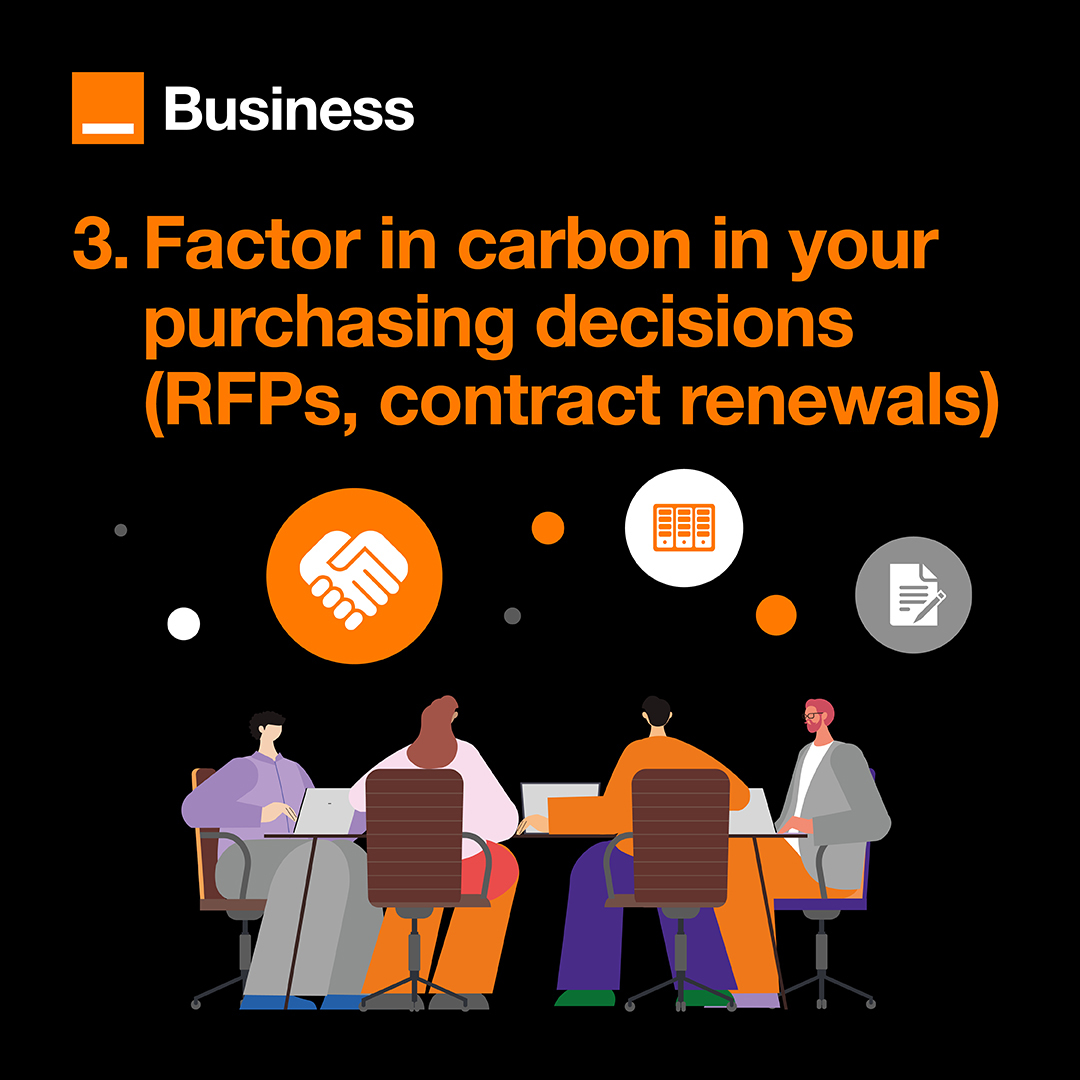
Regarding contributing to CSRD reporting, the calculator provides our customers with valuable results for their upstream Scope 3 reporting, enabling them to zoom in on products and services they purchase from Orange Business.
Enterprises can use this data to establish a baseline carbon footprint, especially for Scope 3 emissions, where direct data collection can be highly challenging.
Making IT more sustainable
There is no escaping that technology is a significant contributor to carbon emissions. Cloud infrastructures, for example, utilize massive, energy-intensive data centers to store and process data while supporting connectivity and collaboration services. The production and disposal of IT hardware and the exponential growth in training AI and machine learning models, which demand massive computational power and substantial energy consumption, are also contributors. By understanding the digital carbon footprint of our services, we can drive efficiencies and create greener technology.
Therefore, it is not surprising that, with mounting pressure from regulators, investors and consumers, Gartner predicts that by 2027, 25% of CIOs will have compensation linked to their sustainable technology impact. Organizations can only drive change and adopt greener technology by understanding their tech providers’ digital carbon footprint in terms of Scope 1, 2 and 3 emissions categories for GHGs and how they fit with their overall IT infrastructure.
As a result, carbon management is increasingly important in RFPs as organizations look to meet their sustainability goals by selecting suppliers committed to carbon transparency and reduction, mitigating risks associated with regulation changes. They can also help build brand equity and discover inefficiencies in their operations.
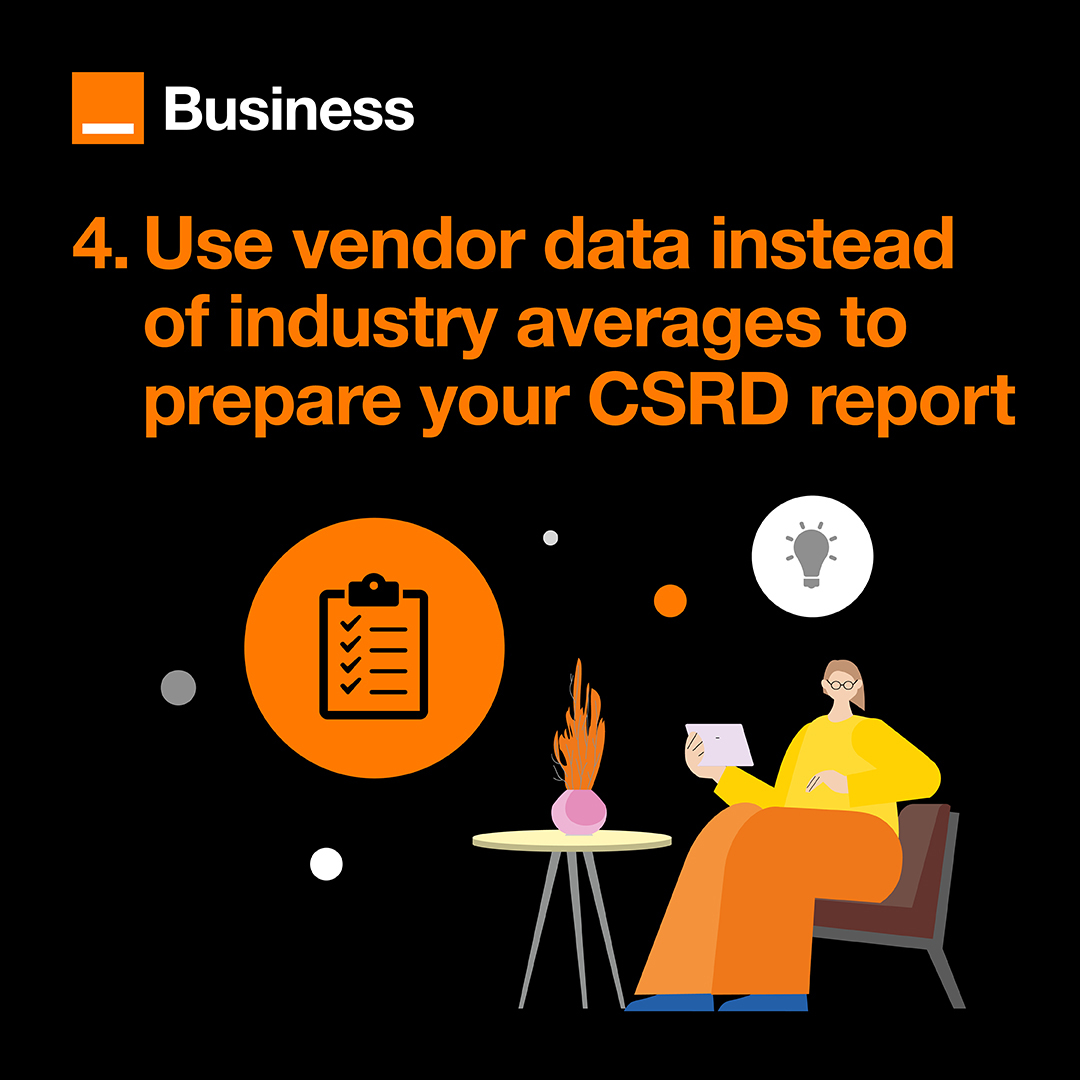
Transparent carbon footprint for our products and services
Sustainability is a core business imperative. Enterprises that understand the carbon footprint of their technology estate are better positioned to adapt to future changes in regulations, market demands and technological advancements.
Orange Business is committed to helping its customers on their sustainability journeys by offering technology and solutions that promote energy efficiency, reduce waste and decarbonize business operations.
The calculator toolkit is part of these efforts, and we are now looking to refine it further to provide our customers with additional insight into their Orange Business procured technologies and services. By enabling our customers to understand and manage their emissions, we play a significant role in transitioning to a more sustainable future.
Discover how our carbon evaluation tool can help you make more sustainable business choices. Contact your account team today to start evaluating your carbon footprint quickly and easily.
Recommended for you
- Orange Business launches Circular Mobility offer in France to reduce carbon footprint of mobile fleets, with AFNOR-certified calculation method
- Flux Vision innovates to tackle sustainability challenges
- Orange Business and Cisco sign first-of-its-kind MoU to accelerate GHG emissions reduction and support net zero goals

Jean-François Cognet has been Head of Corporate Social Responsibility for Orange Business since 2018. He has a mix of consulting and industry experience, for the most part gained in operations. Based in Paris, he is a keen tennis player and a wine enthusiast.